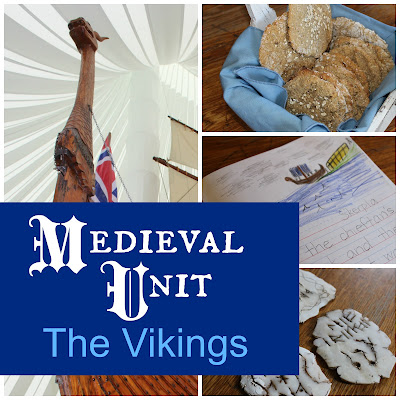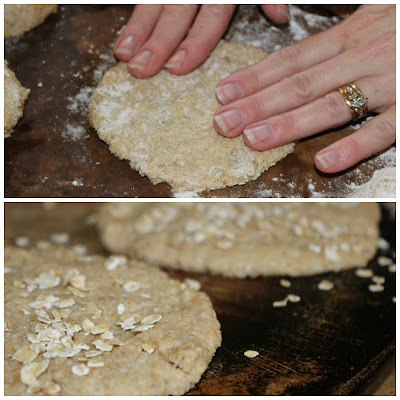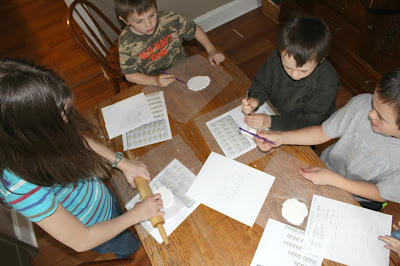My kids have Viking blood in them...or so the story goes. The Hubs is a mix of Norwegian and Danish with some Irish and German thrown in for good measure. He's got the freckled skin and ruddy beard that marks Scandinavian ancestry and has passed his look down to all five of our children.
So, I've got six modern-day Vikings roaming my house. In fact, one of them actually has a Viking name. (We don't call him Blonde Warrior for nothin'. That's actually the English translation of his real-life Norse name.) Fortunately for me, he doesn't ever go around wielding a bloody ax and such (at least not that I know of!)
Not surprising, when we came to the Viking era in our Medieval History study, we camped there for several weeks.
Here's a list of books, activities, and field trips that helped give us a peek into the life of the ancient Norsemen.
(This post contains affiliate links. Please see my disclosure policy for full details.)
Viking Books
The Vikings by Denise Allard
Viking Raiders (Usborne Time Traveler) by Anne Civardi
Vikings by Kate Perry
Growing Up in Viking Times by Dominic Tweedle
Step Into The Viking World by Philip Steele
Since Old Norse is a dead language, archeologists and historians don't know the exact pronunciations or their printed words. But, apparently, Icelandic is a relatively close match and has survived all these years.
Viking Bread
Small, thin, biscuit-like bread loaves were a staple in the Viking diet. These were made from a mixture of coarsely ground oats, barley, rye, or spelt and often contained tree bark or the seeds of other plants to make the dough more substantial. After consulting several sources, we made our own. In full disclosure, we stuck with only the traditional ingredients that the Vikings would have had available to them. Many of the recipes we found contained modern-day leavening agents like baking powder or soda, which would not have been available at that time. So while this bread is quite dry and mealy tasting, and while it is probably not something you'd want to serve at your next holiday party, it will certainly give you a sampling of the "hardy" Norse diet.
(This recipe makes a lot of bread. We ended up delivering several loaves around town to our homeschooling friends, many of which were also studying the medieval era. For a smaller serving size, cut the recipe in half.)
Ingredients:
7 cups of flour (We used a mixture of freshly ground wheat flour and 7-grain cereal flour.)
3 cups buttermilk
1 egg
dash of salt
1/2 cup honey
1/2 cup of nuts finely chopped
1/4- 1/2 cup of oats
additional honey for dipping
Directions:
Grease 2 baking sheets and set them aside. Combine all ingredients and knead until the dough forms a sticky lump. (If you don't have a large electric mixer with a dough hook, give my regards to your tricep muscles.)
On a floured surface and with floured hands, roll the dough into 3-inch balls.
Flatten the balls so that they make coarse "pancakes" about 1/2 inch thick. Sprinkle the top lightly with oats.
Bake at 375 for 20 minutes, flip the loaves, sprinkle with additional oats if desired, and bake for another 25-20 minutes (or until golden).
Serve with drizzled honey.
Creative Writing
After reading all about the Viking's long boats and their barbarian-like raids around other parts of Europe, the kids each wrote a Viking "diary entry." Their assignment was to select a traditional Viking name and trade or societal position for themselves, and use those to write a diary entry describing a "day in the life." They consulted a few online sources to learn the names of the Viking calendar months, in order to properly date their entries, and recalled many interesting facts that we learned together about the Norse days in order to craft authentic stories.
An example: My son wrote a diary entry about Solveig, the son of a Swedish chieftan, who traveled to Iceland during the month of Skerpla (Raids almost always took place in summer months.) in order to establish a new life for himself and his family because farming land was growing scarce in his own country.
Viking Runestone
Stone tablet-style writings called Runestones have been found all over Scandinavian countries and contain writings, mostly names, of the Vikings. They give us a sampling of the alphabet and phonetics of Old Norse and other languages.
You will need:
piece of scrap paper
pencil
a copy of the Viking Alphabet
a sheet of wax paper
package of oven-bake modeling clay
butter knife or carving stick
rolling pin
dark brown acrylic paint
sponge brush
old rag
bowl of water
On the wax paper, roll a lump of clay to make a flat writing surface. Using a butterknife or carving stick, carve your Viking message into the clay.
Bake the clay according to the package directions. Once baked, allow it to cool completely. Next, paint a thick layer of paint on the top and side edges. Be sure to push the paint down into the cracks of your message. Before the paint dries, quickly wash off the top layer using an old rag dipped lightly in water. Don't press the water or rag into the cracks. You only want to wash off the top layer of paint.
The paint that settled into the cracks and words will give the Runestone an aged look. Take turns trying to decode your stones.
Viking Field Trip
Since we live in the mid-west, home of American Scandinavians, and since we purchased a reciprocating museum pass for the kids for Christmas for their gift of Frankincense, we took a trip one weekend to visit the Hjemkomst Viking Ship and Hopperstad Stave Church in Moorhead, Minnesota.
The ship is a replica of the Gokstad Ship, a Viking ship that was unearthed from a burial mound in Sandefjord, Norway in 1880.
The Hjemkomst was built almost single-handedly by Bob Asp in honor of his Norwegian heritage.
After his tragic death from leukemia, Asp's children completed the ship and gathered a crew of thirteen, which later became twelve, to sail the ship from Duluth, Minnesota to Bergen, Norway in the summer of 1982.
The Hopperstad Stave Church is a full-scale replica of a Norwegian Stave Church in Vik, Norway.
Stave churches were built at the close of the Viking era around 1100 to 1200 AD.
This particular replica was built by Guy Paulson and served as his retirement project. Once completed, he donated it to the town of Moorhead, Minnesota.





















What an exciting unit of study for your family! Those runestones turned out really neat and the architecture in the Stave church you visited is beautiful. You're inspiring me to do a unit study to spice up our curriculum.
ReplyDeleteLove this! Very interesting and inspirational!
ReplyDeleteWow!
ReplyDelete